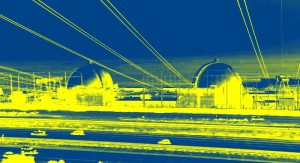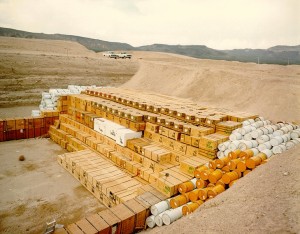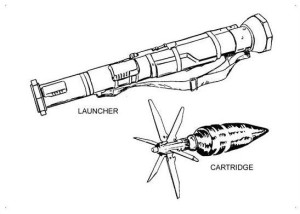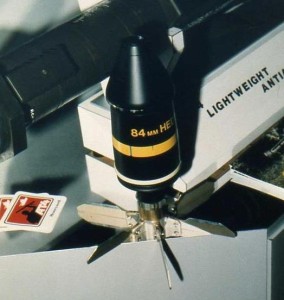 PART TWO – SAN ONOFRE’S RISKY BUSINESS
PART TWO – SAN ONOFRE’S RISKY BUSINESS
SONGS’ phantom security in the danger zone
The San Onofre Nuclear Generating Station doesn’t suffer hurricanes, tornadoes or flooding. But it does sit close to the San Andreas Fault. A recently discovered southern extension of the Newport/Inglewood earthquake fault just two miles off the coast of SONGS makes the dry casking of long-overdue spent fuel rods even more urgent. That rupture fault is capable of generating a 7.4 magnitude earthquake which is 2.5 times stronger a 7.0 which is what SCE says the plant can withstand.
SONGS vulnerability to a tsunami that could be generated by such an earthquake offshore is, however, low. The plant has a seawall that is 30 feet high at low tide but only 14 feet at high tide. The earthquake and resultant tsunami that took out Fukushima Dai-ichi in Japan March 11, 2011 causing an ongoing triple meltdown was 43 to 49 feet high. The good news is that the strike-slip fault offshore is an unlikely source for a tsunami because little ocean water is displaced during an earthquake. It’s the shaking that’s the concern.
“Tsunamis that can be produced by an earthquake in a subduction zone are projected to be larger than those resulting from earthquakes in a strike-slip fault system, such as the Newport-Inglewood/Rose Canyon faults near San Onofre,” Southern California Edison says on its SONGS community website. “San Onofre was built to withstand a peak ground acceleration of 0.67g (g refers to the force of gravity). The maximum ground acceleration experienced at Dai-Ichi was 0.561g in a horizontal direction.”
These SCE figures on SONGS’ foundational strength are reassuring. Having both reactors now defueled is also comforting because a huge earthquake and unlikely tsunami that could impact San Onofre is no longer a threat to the reactors.
The spent fuel pools, in buildings adjacent the two concrete domes of Units 2 and 3, are another matter entirely. If “The Big One” severely impacts infrastructure in Southern California near the plant, getting fuel to cool the spent fuel pools, assuming they are intact and haven’t leaked from cracking, could be a huge challenge.
“They need to decommission all of SONGS and dispose of its rad material in licensed radioactive waste disposal sites,” Daniel Hirsch of the nuclear watchdog group Committee to Bridge the Gap told EnviroReporter.com. “My greater concern is that SCE will try to defer decommissioning for half a century or more. There is no assurance SCE will even exist then, or that the decommissioning fund will still be intact or enough, given the uncertainties of inflation, increased costs of doing the work, disposal, etcetera. The high level waste–the spent fuel rods–has no place to be disposed of at present and will have to be put into dry cask storage on site for an extended period.”
 Except for the fuel rods, everything else on the site will be considered “low level” radioactive waste, Hirsch said. There is a dump in Utah for the Class A waste which is the lowest in concentration of isotopes. A new west Texas dump takes Class A, B and C waste from the state and Maine though it hopes to become the go-to dump for the entire country. It’s owned by Texas billionaire Harold Simmons who is close to Republican Governor Rick Perry.
Except for the fuel rods, everything else on the site will be considered “low level” radioactive waste, Hirsch said. There is a dump in Utah for the Class A waste which is the lowest in concentration of isotopes. A new west Texas dump takes Class A, B and C waste from the state and Maine though it hopes to become the go-to dump for the entire country. It’s owned by Texas billionaire Harold Simmons who is close to Republican Governor Rick Perry.
Even before the SONGS shutdown, radioactive material was removed from the plant and transported across California, Nevada and Utah. EnviroReporter.com has learned that at least one of four huge steam generators already removed from SONGS and transported to Clive Utah as Class A lightly radioactive waste was actually hotter than its rating suggests.
Each 700,000 pound generator was moved on separate trips during 2011 and 2012 for the over 800-mile trek. A one of a kind 192-wheel trailer was constructed to haul the radioactive load taking 21 days to reach the low level radiation dump. Edison officials repeated the claim to media that the vessel was harmless. Making sure the vessel didn’t rupture was paramount.
“There is a slight bit of radioactivity to it,” SCE’s Scott Andresen told ABC November 5, 2012. “But if you stood next to it for an hour, you’d get about the same amount of radioactivity you do when you get a dental X-ray.”
San Clemente environmental activist Gene Stone decided to check out how hot the behemoths really were November 29, 2012. Stone, the leader of the San Clemente-based Residents Organized for a Safe Environment (ROSE), drove his car alongside but about 100 feet from the vessel with a nuclear radiation monitor on his passenger car seat with the camera rolling. Stone’s videotape shows his detector surging over 18 times background radiation for 19 seconds as the car drives by the unseen vessel.
This is a remarkably-high reading at this approximate distance through a steel car door. Stone’s nuclear radiation monitor would have detected far higher ionization had it been aimed at the door, and the vessel beyond, instead of resting on his passenger seat as it was because of the plane of the detector. It would have really gone off if he had a passenger holding it out of the car aimed at the hot and huge steam generator. Regardless, this is an extraordinarily high reading for a giant piece of SONGS equipment that was repeatedly described as benign.
The California Highway Patrol considers anything over three times background a hazardous materials incident tripwire level according to a hazmat report obtained by EnviroReporter.com. The four old steam generators, which began their trip to Utah in Oceanside south of SONGS, each traveled the hundreds of miles through California, Nevada and Utah without incident other than the fact that it was radiating at considerable levels the entire time.
The decommissioning of San Onofre will take hundreds if not thousands of these “low-level” radioactive waste shipments. Only the really hot stuff will remain at the site eventually because of no available national high level waste dump.
The intense gamma radiation from the vessels is not only worrisome for its capacity for harm to unsuspecting workers and bystanders. SCE’s credibility is also at stake once again. Benignly portraying radioactive materials being shipped along American roads and highways does not enhance safety. Quite to the contrary, this policy could harm employees and the public depending on their length of exposure to the hot shipments.
SONGS Terror Target
Factual inconsistencies also endanger the security of the 84 acre area west of the San Diego Freeway which contain the SONGS reactors and spent fuel pools. Security measures this reporter was told were in place soon after 9/11 may never have been implemented at all EnviroReporter.com has learned. In an article for the LA Weekly published in November, 2001, this reporter wrote:
Southern California Edison, which operates San Onofre, maintains that the complex is safe despite the lifting of the FAA flight ban. The company has increased its use of automatic-gun-toting retired police and military personnel in and around the plant….”We’re at the highest state of alert,” Steve Conroy, SCE‘s manager of media relations, told the Weekly.
 The article also exposed that a mock NRC assault on the facility before September 11 revealed that to “penetrate the perimeter fence and breach the access control barrier” took just 18 seconds. At least now, the article reported, SONGS had automatic gun-toting personnel in and outside of the place.
The article also exposed that a mock NRC assault on the facility before September 11 revealed that to “penetrate the perimeter fence and breach the access control barrier” took just 18 seconds. At least now, the article reported, SONGS had automatic gun-toting personnel in and outside of the place.
But did they? Have security personnel at San Onofre been packing machine guns to protect against terrorist attack on a high value target since 9/11, nearly a dozen years ago? According to a June 5 NRC press release, they couldn’t have.
“The Nuclear Regulatory Commission today issued an Order designating 10 nuclear facilities in New York, Maryland, Virginia and California as eligible to apply for authority to permit their security forces to possess and use firearms and related devices despite local, state or federal laws and regulations restricting their use,” said the press release.
The NRC just gave the opportunity for SONGS and Diablo Canyon 250 miles up the California coast to “apply” for machine guns and the like. Nine other nuclear facilities in New York, Maryland and Virginia would also be eligible for the heavy firepower. The directive specifically says that the “spent fuel storage installations at Diablo Canyon and Calvert Cliffs, which are licensed separately, are also included.”
“The Energy Policy Act of 2005 gave the NRC authority to permit security forces at NRC-licensed facilities to possess and use firearms, ammunition and large-capacity ammunition feeding devices in the performance of their official duties regardless of local, state or federal restrictions on their use,” said the document.” This “pre-emption authority” became effective with the 2009 publication of guidelines on the use of firearms at NRC-licensed facilities, which were approved by the NRC and the Department of Justice. Today’s Order spells out how the designated facilities would apply for pre-emption authority, should they desire to do so, and how the NRC would review any applications. It also requires the designated facilities to perform background checks to verify their security personnel are not prohibited from carrying firearms by state law.”
Astonishingly, this means that what the LA Weekly learned and reported in October 2001 wasn’t true and couldn’t have been true for over twelve years since then. It also means that San Onofre is lightly defended when considering the havoc a terrorist attack could wreck should there be an attack the two spent fuel pool buildings, clearly identified in SCE’s SONGS virtual tour video.
When SONGS opened in 1968, nobody envisioned the terrorist threat that would come to define today’s security challenges. Yet only a few years later, in 1972, three terrorists hijacked a Southern Airways flight with handguns and hand grenades and threatened to fly the plane into a nuclear power plant in Oak Ridge, Tennessee. When they got within 8,000 feet of the site, Southern Airways and the FBI agreed to meet their demands. Though the hijackers were eventually apprehended, it was their threat to fly into a nuclear reactor that directly led to the U.S. law that all passengers be physically screened beginning January 5, 1973.
It was box cutters, however, that doomed the four American Airline flights in September 2011. Yet as horrific as the 9/11 terrorists attacks on the U.S. were, al-Qaeda had initially planned for them be much worse. The 911 Commission stated that al-Qaeda originally planned to hijack ten airplanes and crash them into gas stations, bridges, and nuclear power plants on both coasts. Indeed, a top al-Qaeda operative, Khalid Sheikh Mohammed, confirmed that the initial targets for the 9/11 attacks were two nuclear power plants – but Bin Laden ultimately ruled against such an attack due to concerns it would “get out of hand.”
Naturally, SONGS security from terrorism was on many people’s minds twelve years ago as this passage in the 2001 LA Weekly exposé showed:
Nuclear-power facilities are vulnerable despite having walls of thick concrete meshed in re-bar. If the electrical power lines to a plant were cut, the reactor would automatically shut down unless relatively unfortified backup generators were disabled. This could lead to a meltdown. Likewise if saboteurs cut off or clog the water supply to the reactors. Spent nuclear-fuel dry casks and cooling ponds for “hot” fuel rods could be set afire with incendiary weapons, which make them the most vulnerable targets at the plants.
Not only has the knowledge of this threat been exposed before, the information has been ignored as evidenced by scant indications of increased SONGS security. Now with it apparent that the site has been without heavy weaponry since a month after 9/11 despite information to the contrary, other common sense measures are also not evident at the site.
 The NRC learned little from 9/11. Prior to that terrible day, the NRC’s regulations required nuclear power plants to be able to protect against just three external attackers are with no more than machine guns. Dan Hirsch explained the regulations at a 2010 lecture at the University of Southern California attended by EnviroReporter.com:
The NRC learned little from 9/11. Prior to that terrible day, the NRC’s regulations required nuclear power plants to be able to protect against just three external attackers are with no more than machine guns. Dan Hirsch explained the regulations at a 2010 lecture at the University of Southern California attended by EnviroReporter.com:
“The NRC said there will absolutely never be a terrorist event involving more than three. What happened on 9/11? There were 19. Did they come in by foot? No. Did they use instruments only up to semi-automatic weapons? No. They used jumbo jets. They operated by more than one team. And they contemplated hitting a nuclear power plant as part of the original attack. But apparently Bin Laden said ‘no, let’s do that on the next attack.’ I did a petition for rule making at the NRC years ago and kept repeating it, that they should protect against larger numbers, they should protect against truck bombs. They finally got that approved, only after truck bombs were used at the World Trade Center. So they now protect against truck bombs but there’s still no requirement to protect from an attack from the air, and no requirement to protect against a 9/11 sized attack. We have increased it from the three, to, how many? Five. And the argument there is that 9/11 wasn’t really just one terrorist attack, but four. There were no more than five terrorists per plane.”
Indeed, a study by the Government Accountability Office concluded that the NRC based its revised rules “on what the industry considered reasonable and feasible to defend against rather than on an assessment of the terrorist threat itself.”













This is a very important article with excellent analyisis of the security and safety situation at San Onofre nuclear plant and the nuclear industry in general.
Great work using open intelligence sources to point out the corruption at SCE/Nuclear Industry, that is putting the lives of everyone at risk simply for the satisfaction of greed and profits.
This in depth article deserves to be broadly disseminated, thank you for the work you have put into this informative piece.
Terrorists, psychos, wars and disgruntled crazy [furloughed] employees, not to mention mother nature, are extremely unpredictable.
Nuclear Power cannot, should not, operate with ‘unpredictable’ risks that carry with them the incalculable insidious destructive power to harm innocent life on such an unimaginable massive long term scale.
Seriously, I don’t understand why don’t people get this?
😉
In reading this article, some things become very clear. There are many reasons to shore up security at particularly vulnerable nuclear sites. For a private company, such as SCE, security is not their top priority. A private company’s top priority is, not surprisingly, profit. Security is a cost, and costs subtract from profit. The NRC understands this, and makes security scenarios that will not cost nuclear plant operators too much money. The article also references Osama Bin Laden and his thinking on nuclear targets. I was unaware that Osama Bin Laden recommended against such targets (at that time). That is very interesting. Now that the US has removed Osama Bin Laden from the equation, the US may have removed one of the individuals who provided an argument against thinking of nuclear sites as targets. Feeling more uneasy now? You should. Michael Collins has painted a worrisome picture of the future. Specific vulnerabilities, methods of attack, and weapons that could be used, are all very frightening. I suspect the terrorists don’t really need any help thinking up ways to attack a nuclear site. The real danger lies more fundamentally within the mindset of the terrorists. Do they understand such an attack could “get out of hand”, producing consequences that could spiral out of control? Consequences that would not be in the terrorists best interests? From reading this article, I think Osama understood that. But Osama is no longer there to prevent the unthinkable. That “mindset” gateway to nuclear terrorism may now be open. That is what should worry us most. Thank you Michael for your article. Very thought provoking. Very scary actually. I won’t be sleeping as well tonight. America shouldn’t either.